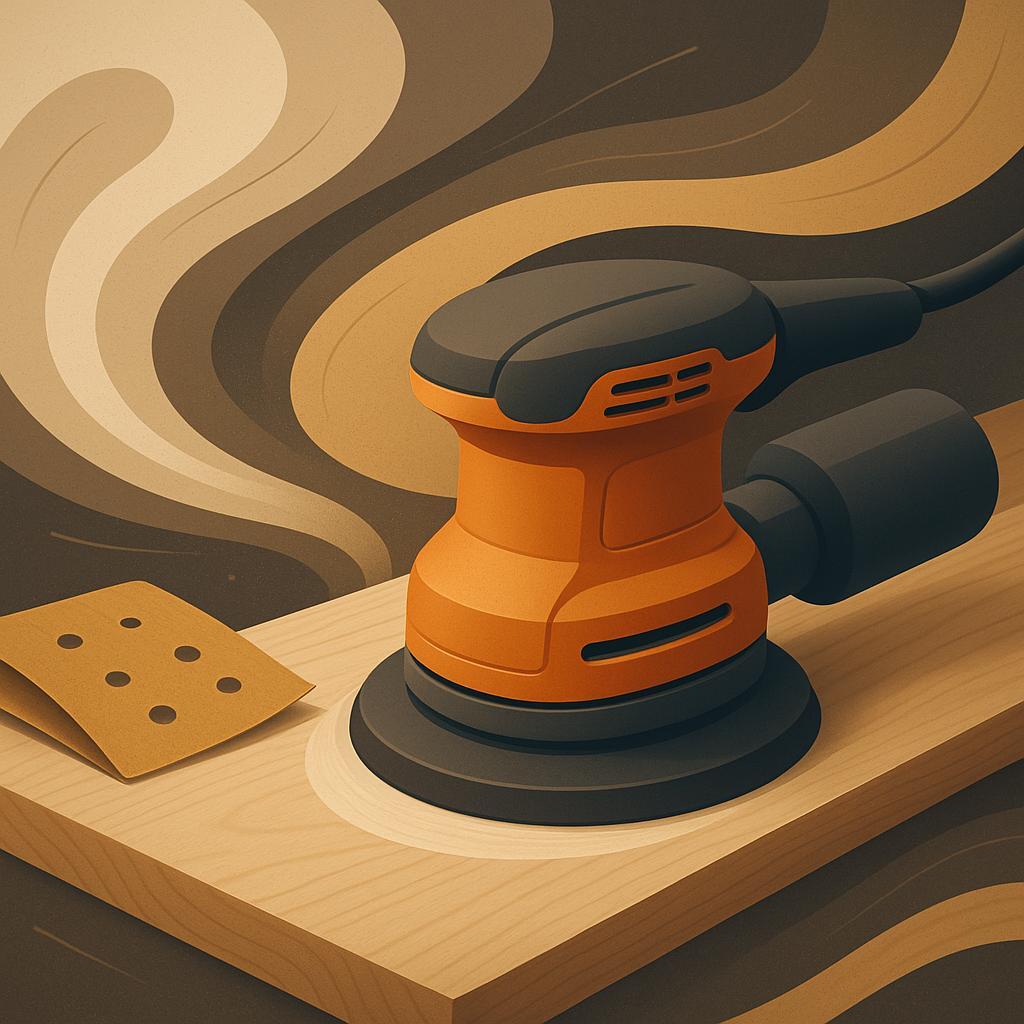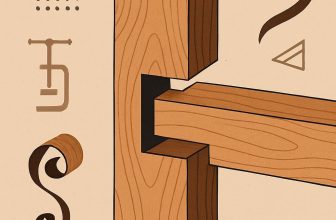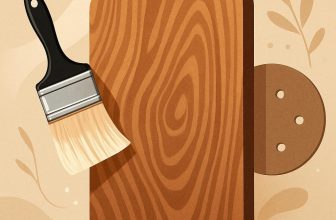
Scratch the surface for perfection-your finish depends on the smooth you create today. In woodworking, the last coat is only as good as the surface beneath it, and that surface starts with purposeful sanding. mastery here matters to every enthusiast who wants clarity of grain, consistent sheen, and doors that close with a whisper rather than a squeak. this guide breaks down grit progression, technique, dust control, and common missteps so you can plan a calm, efficient workflow. By the end, you'll know how to sand for speed, precision, and a flawless finish that ages with grace.
After the intro add :
Choosing the Right Sandpaper Grit for a Flawless Finish
Choosing the right sandpaper grit shapes the entire finishing journey. start coarse enough to flatten and remove imperfections, then move progressively to finer grits to refine.For bare wood, begin around 100-150 grit to establish a flat, even surface; for reclaimed or previously finished surfaces, you may need coarser steps to level uneven areas, then fine-tune. If you're removing an old finish, you'll often jump to 60-80 grit first to knock it back quickly, then step up through 100-150, 180-220, and beyond. A golden rule: use the lowest grit that achieves your goal,then switch to a higher grit to erase the scratches from the previous step. Test on a scrap piece to verify patience and avoid over-sanding.
Use this quick reference as a map through grit selection:
| Grit Range | Typical Use | Best For |
|---|---|---|
| 60-80 | Rough stock removal, flattening tool marks | Softwoods, heavy stock removal |
| 100-150 | Initial smoothing, evening out roughness | Bare wood, pre-sanding |
| 180-220 | General sanding, scratch removal | Finish-ready surfaces, between coats |
| 320-400 | Fine prep, close to the finish | Between coats or final prep on soft materials |
| 600-1000+ | Ultra-fine smoothing, final polish | Final passes, satin sheen, dust-off between coats |
In practice, match your pressure to the grit: let the paper do the work, not your grip, and keep the sander moving in consistent, overlapping passes with a light, steady touch.When hand-sanding, use a sanding block to maintain flatness and avoid creating dips. Work with the grain whenever possible, and switch to cross-grain only to remove stubborn scratches-then instantly follow with a finer grit to reduce cross-grain marks. Manage dust by wearing a mask and clamping a bag or using a vacuum setup; clean the surface between grits to prevent re-scratching, and wipe with a damp cloth before applying any stain or finish. always perform a test finish on a hidden area or a scrap to confirm colour, sheen, and adhesion before committing to the entire piece.
Build Your Dream Workshop on a Budget →
Preparing the Surface for Sanding to Enhance Adhesion and Smoothness
Begin with a quick substrate audit to identify what you're really dealing with-paint, varnish, laminate, or raw wood-all of which behave differently when it comes to adhesion. Scan for glossy surfaces, peeling coatings, waxy residues, or stubborn oils. Cleanliness is your first and most reliable ally: wipe with a lint-free cloth dampened with the appropriate solvent (water and mild detergent for most woods, mineral spirits or a dedicated degreaser for oily finishes), then rinse and let dry fully. A dry, dust-free canvas is essential before you touch the sanding tool.
Next, decide how you'll approach deglossing to expose tooth without removing material. For high-gloss finishes, a chemical deglosser or a brief scuff with very fine sandpaper (e.g., 320-400 grit) can dull the shine so bonding agents can grab. For matte paints, sealed woods, or unfinished surfaces, you may skip deglossing and proceed with a light hand-sanding after dust removal. Irrespective, avoid soaking the surface; moisture trapped under the finish can cause blotching or warping.
Repair and protection: fix cracks, nail holes, or dents with a compatible filler and allow it to cure fully; then lightly sand flush with the surrounding area so the surface reads even. Mask edges, hardware, and adjacent surfaces to prevent unintended abrasion and protect from dust. wipe again with a tack cloth or microfiber cloth to lift any remaining dust and ensure the surface is truly clean and dry before you start sanding.
| prep Step | What to Do | Why It Helps |
|---|---|---|
| Identify substrate | Inspect finish type and condition | Guides degreasing and abrasion choices |
| Clean & degrease | Use detergent solution or solvent as needed; rinse and dry | Removes oils and wax that impede adhesion |
| Degloss or scuff | Apply deglosser or light sanding (320-400 grit) | Dulls gloss and provides tooth |
| Repair & protect | Fill and flush-sand; tape edges | Ensures a uniform base |
build Your Dream Workshop on a Budget →
Mastering Sanding Techniques for Different Materials
Choosing the right approach starts with understanding the material under your fingertips. Each surface-wood, metal, plastic, or a coat of paint-responds to sanding in it's own way. Plan your passes, use dust extraction, and test on a scrap piece to see how the grain or surface reacts. The goal is progress, not perfection in a single stroke; small, controlled removals reduce chatter and heat and protect the underlying integrity of the material.
Wood requires respect for grain. always sand with the grain to avoid fuzzy fibers and tear-out, and use a sanding block or a cork-backed pad to maintain flatness. Start rough with 80-120 grit to knock down tool marks, then step up to 180-220 for a smooth finish. For soft woods, lighter passes with 120-180 can help avoid gouges, while harder woods tolerate a tad more bite. Finish with a final pass at 220-320 to minimize blotching and close the pores for a ready-to-stain or seal finish.
Metal, plastics, and painted surfaces demand tailored approaches. When working metal, the emphasis is heat control and even abrasion.Start with coarser grits (60-120) to remove rust or deep imperfections, then move through finer grits (180-320) to refine the surface. Keep the piece cool, use lubrication if needed, and avoid lingering in one spot to prevent warping. Plastics and composites require gentler handling: use 320-600 grit with light pressure and frequent checks to avoid heat buildup or hazing. For painted surfaces, aim to scuff rather than strip: a light 180-220 pass provides adhesion for the new coat, followed by a thorough dust-off before priming.
To make quick decisions on grit and technique, refer to the concise guidance table below. It consolidates common materials with recommended sander types and grit ranges, helping you map a safe, effective progression at a glance.
| Material | Sander Type | Grit Range | Notes |
|---|---|---|---|
| wood (soft) | Orbital | 80-180 | Gentle passes; follow grain |
| Wood (hard) | Random orbital | 80-120 | Increase grit gradually; avoid gouges |
| Metal | Disk/Belt | 60-120 or 180-320 | Rust removal vs. finishing |
| Plastic/Composite | Orbital | 320-600 | Low heat, avoid melting |
| Painted surface | Orbital | 180-220 | Scuff for adhesion |
Build Your Dream Workshop on a Budget →
Achieving Even Results with Proper Sanding Pressure and Motion
Even results begin with a mindful touch.Apply steady, controlled pressure that matches the sanding stage and the tool you're using. For most projects, aim for light to medium pressure-enough to keep the pad in contact without digging into grain or filler. Let the sanding disc do the work,not your wrist or fingers. if you notice dings or an uneven texture,ease up and check your grip; a rigid wrist or tight squeeze can create low and high spots across the surface.
Choose the motion to suit the surface and the grit you're using. On flat panels, maintain a consistent circular or orbital pattern with overlapping passes to blend scratches away. For edges and curves,feather the transition by lightening pressure as you approach the boundary,then gradually lift to blend into the surrounding area. keep the sander in steady contact, and avoid stopping and starting in the same spot, which can leave burn marks or swirl lines.
| Scenario | Recommended Pressure | Motion |
|---|---|---|
| Flat panel | Light-Medium | Circular or orbital, overlapping passes |
| Edges/feathering | Very light | Light, outward/feathering strokes |
| Progression to fine grit | Light | Back-and-forth or cross-hatch, gradual easing |
Consistency checks should become second nature. After a few passes, wipe the surface or inspect under raking light to reveal scratch patterns.If you see uneven sheen or scratches that run in parallel, adjust by shifting either your pressure or your motion direction to blend evenly. For a true read on flat areas, run a straightedge or a level across the surface to feel for hotspots where the finish might be too thin or too thick in spots.
cultivate habits that support even results: keep the sander moving at a steady pace, maintain a relaxed grip that allows your arm to guide rather than push, and periodically clean the pad and vacuum the work area to prevent debris from digging in. as you progress through grits, reduce pressure gradually and use more passes with less contact time, so the surface becomes uniformly prepared for the next finish layer.
build Your Dream Workshop on a Budget →
controlling Dust and Maintaining a Clean Work Area for Precision
Maintaining a dust-controlled workspace is essential for precision sanding. Fine dust clouds obscure visibility, settle into the grain, and can mar a flawless finish. By prioritizing containment and filtration, you protect your lungs, your tools, and every deliberate pass. Treat dust control as a core step in your process and invest in a capable dust-collection setup that you use consistently.
Set up a clean airflow strategy that minimizes re-entrainment and keeps your work surface pristine. Position the dust collector or cyclonic vacuum as close to the sanding zone as possible, route hoses away from your breathing zone, and keep a tight seal at doors and openings to prevent stray particles.
- Position the dust-collection unit close to the sanding zone and use a short, smooth hose to reduce shedding.
- choose a HEPA-filtered vacuum or a cyclone with a high-efficiency bag to capture fine dust at the source.
- Seal doors and vents when sanding; consider an exhaust fan or portable air cleaner to pull dust away from the operator.
- Wear a proper respirator (P100) and eye protection, and replace filters and bags regularly.
Consistency is maintenance-keep the system effective with routine checks and quick cleanups. After each session,wipe down surfaces with a damp cloth,vacuum the benches,and inspect hoses for wear. Regularly replace bags or cartridges and clean filters according to the manufacturer's schedule to maintain suction and prevent clogging. A small daily routine pays dividends in the smoothness of your finish.
| Dust-control method | Pros | cons |
|---|---|---|
| HEPA vacuum | captures fine particles at the source; improves air quality | Requires power and periodic filter/bag maintenance |
| Central dust-collection system | Powerful, low airborne dust; scalable | Higher upfront cost; ducting needed |
| Air scrubber | reduces odors and some vocs; portable | Limited particle capture; needs ongoing maintenance |
Build your Dream Workshop on a Budget →
Finishing Touches and Maintenance to Sustain a Flawless Look
Finishing touches begin with a final sweep of the workpiece to ensure the surface is truly flawless. Wipe with a tack cloth to remove microscopic dust, then inspect edges and corners for nibs or uneven ridges that can catch a cloth or finger. If you notice any small imperfections, a light, deliberate pass with fine-grit sandpaper (320-400 grit) followed by another gentle wipe will typically restore uniform sheen without marring the grain.The key is precision rather than force-let the pad do the work and your eyes decide when the finish looks even and glass-smooth.
Once the finish has cured, set up a maintenance routine that protects the investment. Use a soft, microfiber cloth for daily dusting, and employ a non-marking cleaner or a damp cloth with a tiny drop of mild soap for deeper cleans.Avoid abrasive pads, hot water, or harsh chemicals that can dull or scratch the surface. For added longevity, consider a sacrificial protective layer such as a paste wax or a furniture oil, applied according to the product's instructions, then buffed to a soft glow. Place the piece away from direct sunlight and heat sources to slow color fade and drying stress.
To keep results consistent year after year, plan periodic touch-ups and refreshes. Light re-sanding with 400-600 grit and re-application of your chosen topcoat can revive a worn area without a full redo. Record your maintenance schedule in a small checklist so you don't miss the intervals, and tailor the routine to use-case demands-high-use surfaces may benefit from more frequent checks. small habits compound into lasting beauty, so treat each interaction with the surface as an chance to preserve the flawless finish.
| Task | Frequency | Tip |
|---|---|---|
| Dust and clean | Weekly | Use microfiber; avoid solvents on open grain |
| Inspect for wear/nicks | Monthly | Look at joints, edges; sand lightly if needed |
| Reapply topcoat or wax | Annually or as needed | Follow product instructions; buff to shine |
| Repair small scratches | As occurs | Match stain; apply thin touch-up and blend |
build Your Dream Workshop on a Budget →
Q&A
What grit progression yields a truly smooth, flawless finish?
Begin with a coarser grit to remove defects, then move to finer grits for a better surface. For bare wood, a common sequence is 120-150, then 180, and finish with 220. If you're refinishing an existing surface with scratches or old varnish, start around 80-120 and work up to 180 and 220.Finish with a light pass on 220 (or 320 on very soft woods) to minimize swirl marks.
Which tools and techniques help you keep the surface even and flat?
Use a sanding block or backing pad to maintain flatness and even pressure,paired with a random-orbit sander to reduce gouges. Choose the right grit for each step and ensure you're using new or well-cut paper. A dust-collection system and a clean workspace keep scratches from recycled dust, and always test on a scrap before committing to the piece.
How can I minimize dust and avoid visible swirl marks?
Work with a vacuum or dust collector and follow with tack cloths between grits to remove dust. Wipe the surface with a damp cloth or tack cloth just before the final passes; avoid pressing hard-let the sander do the work. Finish with a final pass on a fine grit and inspect under good lighting to catch any swirl marks early.
How do I know the surface is ready for finishing?
The surface should feel uniformly smooth with no gritty spots; the scratch pattern should be barely visible under bright light. Run a clean,gloved hand over the area to confirm there are no ridges or rough patches. If you notice any defects,sand lightly with the next finer grit and wipe clean before applying finish.
Wrapping Up
At its heart, sanding mastery is about listening to the wood: choosing the right grit progression, maintaining even pressure, and honoring the grain until the surface feels unavoidable under your palm. The takeaway is simple: anticipation and discipline at the bench yield a finish that reveals rather than hides your work. For woodworking enthusiasts, that flawless finish isn't vanity; it's the conversation between craft and patience, a quiet signal that the project was treated with care. so grab a project, or dig into another guide, and put these insights to work: test, refine, and breathe life into your pieces. May your shop shine with confidence and steady momentum.







This is such an informative post! I never realized how crucial the right sanding techniques are to achieving a flawless finish-definitely going to incorporate these tips into my next project!
I completely agree, Katherine! Proper sanding really makes all the difference in the final result-thanks for sharing these essential tips!
Great insights, Katherine! I’ve always struggled with getting that perfect smoothness, but your tips are definitely going to help elevate my sanding game!
Fantastic tips, Katherine! I’m excited to try out your techniques on my next woodworking project; achieving that flawless finish has always been my goal, and your guidance is just what I need!
Thanks for sharing, Katherine! Your insights on sanding techniques are incredibly helpful; I’ve often overlooked the importance of proper sanding, but now I’m eager to enhance my skills and take my projects to the next level!
Thank you for the fantastic advice, Katherine! I’ve always found sanding to be a bit daunting, but your clear instructions and insights have made it seem much more manageable; I can’t wait to apply these techniques to get that smooth finish I’ve been aiming for!
This is such an informative post, Katherine! I appreciate your detailed breakdown of the sanding process; understanding the right grit and technique is key, and your guidance is sure to help many of us achieve that sought-after flawless finish!
This post is a game-changer, Katherine! Your thorough explanation of the sanding essentials really demystifies the process, and I feel more confident tackling my projects now; thanks for encouraging us all to achieve that perfect finish!
This post is so enlightening, Katherine! Your tips on sanding techniques are invaluable, and I’m looking forward to implementing them in my upcoming projects to achieve the smooth, flawless finishes I’ve always desired; thanks for making it all seem so approachable!
Great post, Katherine! Your tips on achieving a smooth finish through proper sanding techniques are super helpful; I’m excited to put your advice into practice and elevate my woodworking projects!
Katherine, this post is incredibly insightful! Your step-by-step guidance on sanding techniques demystifies the process for beginners like me, and I can’t wait to experiment with your tips to achieve that perfect, smooth finish on my projects-thanks for empowering us!
Wow, Katherine, this is an amazing resource! Your detailed insights on sanding essentials are incredibly helpful, and I appreciate how you broke down the process to make it less intimidating; I’m looking forward to applying your techniques and achieving the smooth finishes I’ve always aimed for in my projects-thank you for sharing your expertise!
Katherine, your post is a treasure trove of sanding knowledge! I love how you’ve simplified the techniques and made them accessible for everyone, regardless of skill level; I’m excited to dive into my next project with your advice in mind and finally achieve the flawless finishes I’ve always dreamed of-thank you for sharing such valuable information!
Katherine, this is such an incredible guide! Your expert tips on sanding are clear and practical, making it easy for anyone to follow; I can’t wait to apply what I’ve learned and finally get the flawless finishes I’ve been aiming for in my work-thank you for your generosity in sharing your knowledge!
Katherine, fantastic job with this post! Your thorough breakdown of sanding essentials offers invaluable insights that will definitely help both novices and seasoned pros achieve that flawless finish; I’m eager to implement your techniques in my next project and see the difference they make-thank you for the inspiration!
Katherine, you’ve outdone yourself with this post! Your in-depth exploration of sanding techniques is both enlightening and practical, making it accessible to everyone, and I’m excited to put your expert advice into action for smoother finishes in my upcoming projects; thank you for sharing your wisdom with us!
Katherine, I absolutely love this post! Your detailed insights on sanding essentials are incredibly helpful and practical for anyone looking to improve their finishing skills; I’m eager to put your advice into practice and achieve the smooth, flawless results I’ve been striving for-thanks for sharing your expertise with us!
Katherine, this post is a game changer! Your comprehensive guide to sanding essentials is not only informative but also super encouraging, making the process feel achievable for everyone; I’m thrilled to take your tips to heart on my next project and finally get that perfect finish I’ve been after-thank you for your fantastic insights!
Katherine, this post is outstanding! Your detailed approach to the essentials of sanding is not only informative but also incredibly motivating; I’m looking forward to applying your techniques in my next project to achieve that smooth, flawless finish I’ve always wanted-thank you for sharing your expertise with us!
Katherine, this post is truly impressive! Your ability to break down the essentials of sanding in such a clear and engaging way makes it accessible for everyone, and I can’t wait to try out your techniques to elevate my finishing work; thank you for your valuable advice and inspiration!